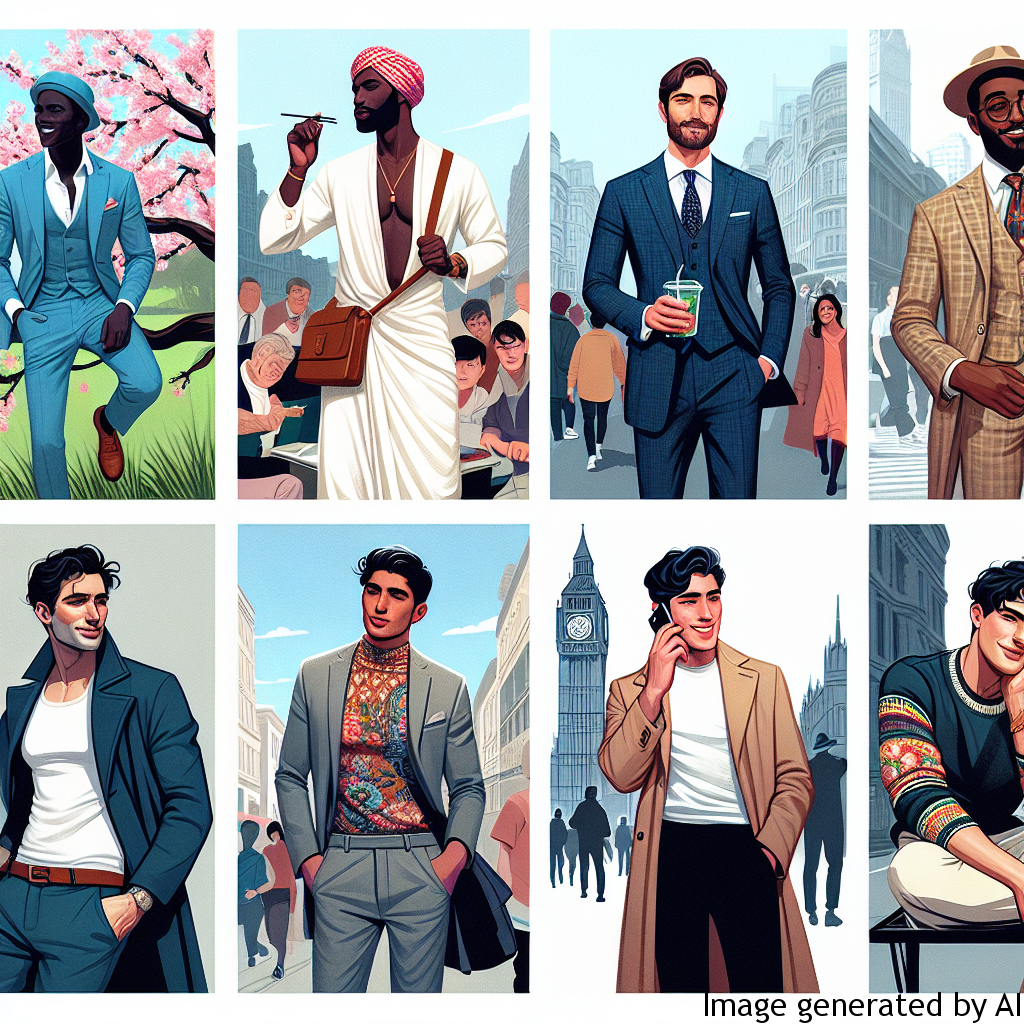Introduction
Everyday men’s fashion and how it is perceived has a significant impact on shaping the perception of masculinity and sexuality. This concept is inextricably entwined with societal stereotypes and psychological wellbeing of men, largely influenced by gender roles and expectations. What men choose to wear on a daily basis, and more importantly, how it is perceived by others can have a profound effect on their mental state.
Gender Expectations and Their Impact on Men’s Psychological Health
Defining Gender Expectations
Socially constructed roles and behaviors that society deems appropriate for men and women are referred to as gender expectations. For men, these often emphasize strength, dominance, and emotional restraint. This extends to aesthetics, particularly fashion choices, where these traits are often equated with certain styles.
The Pressure for Men
Men are constantly under pressure to conform to these expectations, including certain trends or styles. Failure to align with these norms can result in feelings of inadequacy or rejection, leading to stress, anxiety and even depression. Rigid expectations can also limit self-expression through fashion, influencing how men perceive their own sexuality.
Examples of How Gender Roles Can Affect Men’s Lives
Gender roles can dictate men’s daily decisions, including what they wear. For example, a man who prefers skinny jeans or brightly colored attire might suppress these preferences due to societal stereotypes associating such fashion choices with femininity. This kind of self-restraint can cause distress, lower self-esteem, and impact a man’s overall mental health. This also affects their perception of their sexuality, as any deviation from the societal norms might be perceived as a reflection of their sexual orientation.
Tips on Improving Psychological Health Considering Gender Roles
In order to boost psychological health, it is crucial to challenge the societal expectations that limit self-expression. Men should be encouraged to embrace their fashion choices as a form of self-expression and not as an ultimately definitive factor of their masculinity or sexuality. Counseling or therapy can be a helpful resource for those struggling with these issues. Moreover, increasing dialogues on the diversity of masculinity can help break down harmful stereotypes, fostering an environment that respects and values individuality over conformity.
Conclusion
Inculcating individuality over stereotypes, especially when it comes to everyday men’s fashion, is crucial for a positive impact on the perception of masculinity and sexuality. It is time to move beyond the narrow constraints of gender expectations, allowing men to express themselves through their clothing without fear of stigma or judgment. As society becomes more accepting and acknowledges the fluid nature of fashion, gender roles, and sexuality, men’s psychological health will become a beneficiary, fostering a healthier perception of self-worth and identity.

